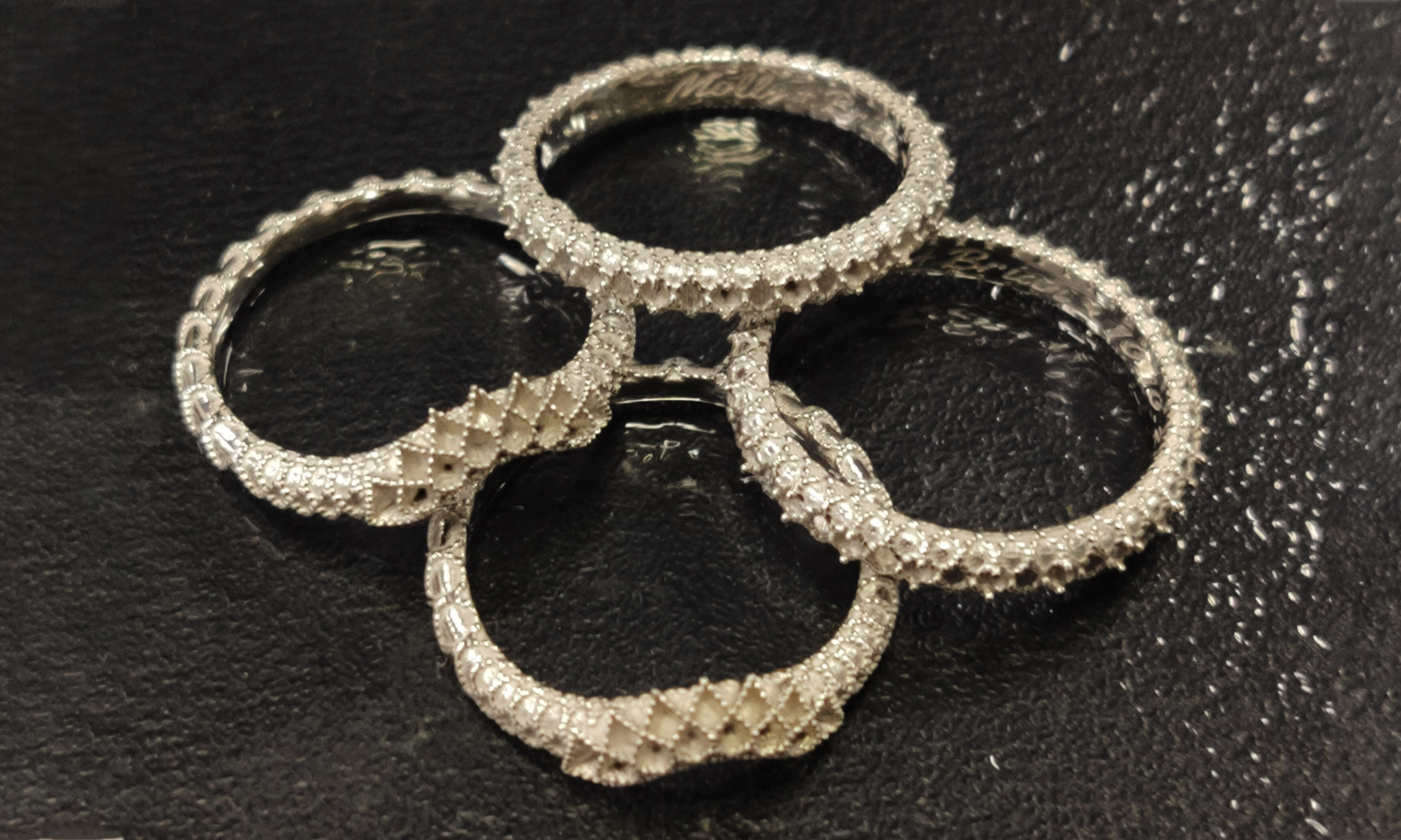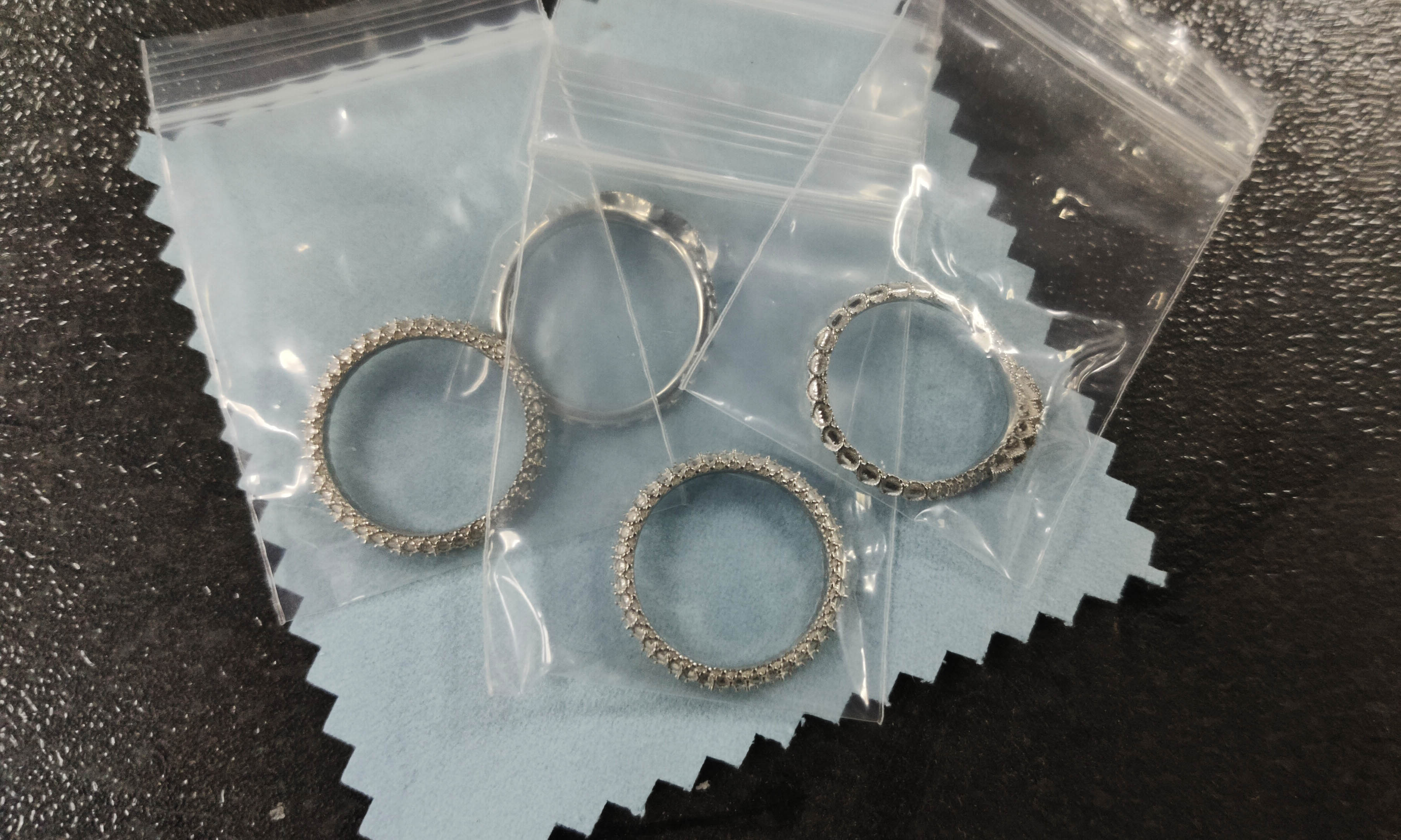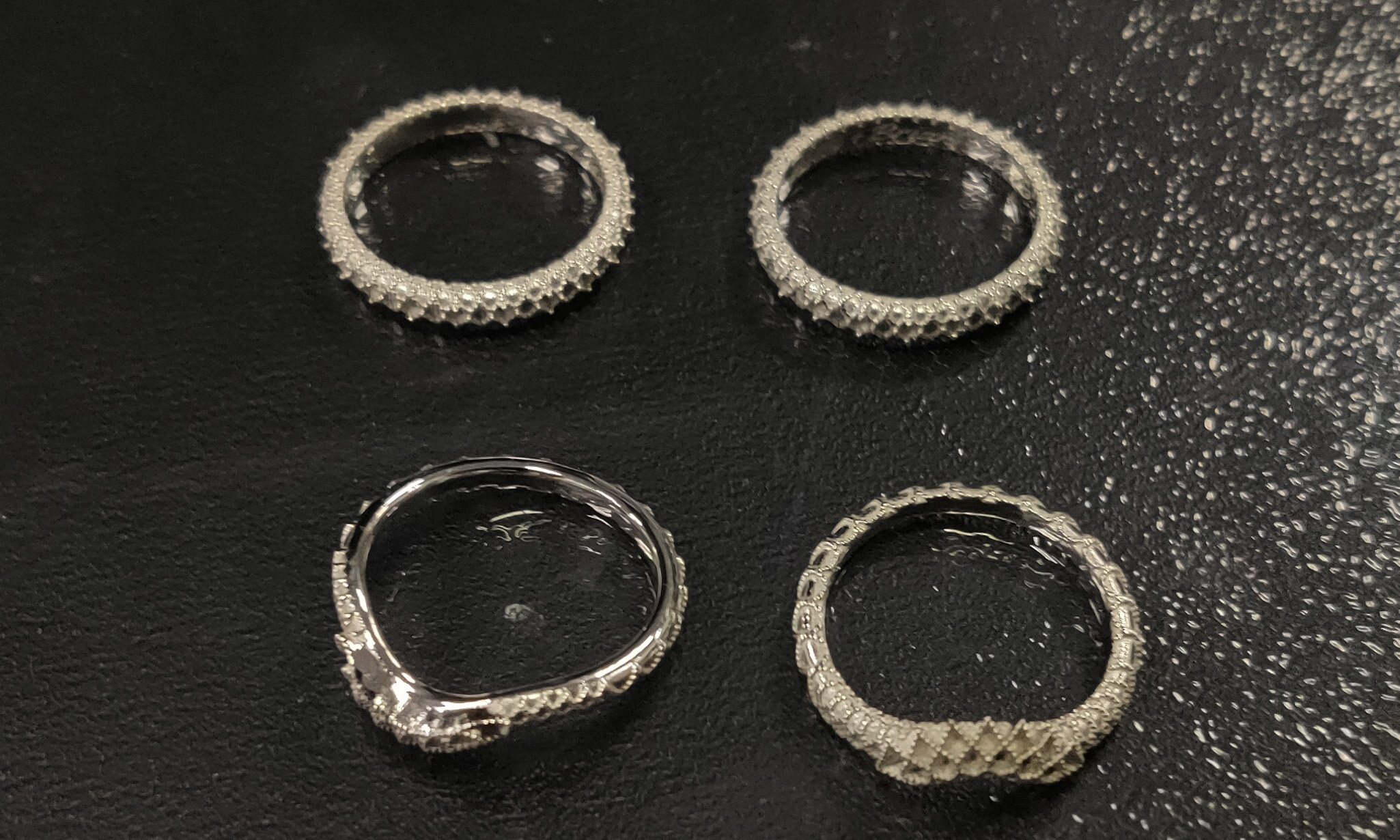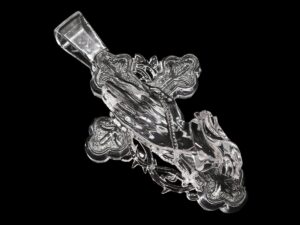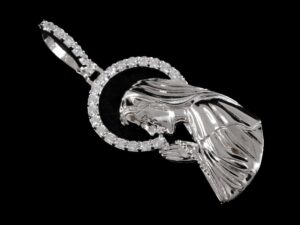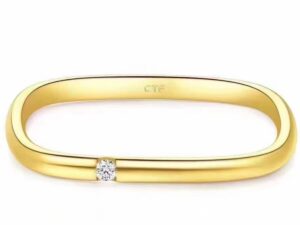- SLA 3D Printed Transparent Spaceship Model with Clear Resin
- SLA 3D Printed Beijing Daxing International Airport Rooftop Model
Material Resin, Metal
Quantity 4 pcs
Price Range $1,000-5,000
Lead Time 5 workdays
Gallery
About Project
If you are searching for the best engagement rings, then it will be a tough task to choose one from thousands. You check stones, metal quality, shapes, cuts, third-party certifications, 4ŌĆÖCs of diamond, and much more. All these things will make it quite difficult to grab the best ring for your engagement. Therefore, Custom made engagement rings will work best for you.
Our customer and his fianc├®e felt unsatisfied with the current rings being sold. They scoured the vintage jewelry shops, and then the dreaded mall stores, until they finally decided that the only way to get exactly what they wanted was to design the rings themselves.
As any self-respecting industrial designer, he can design the rings with CAD software. And FacFox luckily undertook the making part, 3D print the wax pattern and cast with platinum.
Challenge
The difficulty of casting relies on the material we use to some extent. Platinum is a challenging material for casters because of its physical properties, which result in possible crucible and flask reactions during melting and casting, high shrinkage porosity, and difficulties in filling of filigree items. The minimum detail we can realize is 0.2 mm, and the minimum diameter of the ring should be 0.5 mm.
Solution
- Step 1: Examine the file and ask about the desired ring size, and scale the design to account for shrinkage as each metal has a different shrinkage rate. We also recommend leaving the place for gems or diamonds, and design the stone setters for every specific stone. Then we output the CAD file to an STL file.
- Step 2: FacFox owns dozens of high-precision DLP wax printer designed specifically for jewelry casting. The material we use is DLP Ultra Detail Resin, which is especially suitable for fine-detail models with smooth surfaces. After printing, remove the model from the tray and place it in hot water to melt the support material.
- Step 3: Put the model in a container with liquid gypsum. The gypsum solidifies while the wax melts in the furnace, and finally, a mold of gypsum is obtained.
- Step 4: The molten metal is poured into a mold and hardened. Customers need to pay for a little bit of extra material in the form of a sprue attached to the design. This is where the molten metal enters the mold cavity. The caster will cut the sprue as close as possible, but a bit will remain that will contribute to the total weight. The sprue will be sanded off during the finishing process.
- Step 5: Break the mold of gypsum and a new piece of jewelry is born.
- Strep 6: Polish the jewelry, and then carefully clean it and polish it by hand.
